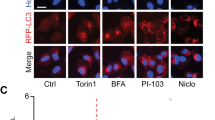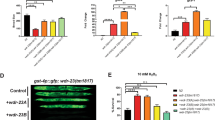Abstract
Proteasome inhibitors have been used to demonstrate that many proteins of the signal transduction pathways are regulated by degradation via the ubiquitin-proteasome pathway. The key question is what events target specific proteins for ubiquitination at one time and prevent ubiquitination at other times? In this review, we develop the notion that there is a direct relationship between the phosphorylation/dephosphorylation cascade of the signal transduction pathways and the targeting of the regulatory proteins for ubiquitination. We present examples where phosphorylation appears to alter the interaction between the targeting systems and the substrate by modifying the targeting system, the substrate, or both. These interacting systems are seen in the response of p53, c-jun and ATF-2 in cells subjected to stress or DNA damage and to the normal regulated response in a variety of pathways including the IκB-NFκB and JAK-STAT pathways. The interweaving of the two post-translational networks, phosphorylation and ubiquitination, provides a powerful insight into global regulatory control pathways.
This is a preview of subscription content, access via your institution
Access options
Subscribe to this journal
Receive 50 print issues and online access
$259.00 per year
only $5.18 per issue
Buy this article
- Purchase on Springer Link
- Instant access to full article PDF
Prices may be subject to local taxes which are calculated during checkout
Similar content being viewed by others
Author information
Authors and Affiliations
Rights and permissions
About this article
Cite this article
Fuchs, S., Fried, V. & Ronai, Z. Stress-activated kinases regulate protein stability. Oncogene 17, 1483–1490 (1998). https://doi.org/10.1038/sj.onc.1202184
Published:
Issue Date:
DOI: https://doi.org/10.1038/sj.onc.1202184
Keywords
This article is cited by
-
Prevention of calpain-dependent degradation of STK38 by MEKK2-mediated phosphorylation
Scientific Reports (2019)
-
The kinase Jnk2 promotes stress-induced mitophagy by targeting the small mitochondrial form of the tumor suppressor ARF for degradation
Nature Immunology (2015)
-
The MDM2–p53 pathway: multiple roles in kidney development
Pediatric Nephrology (2014)
-
Cucurbitacin-I (JSI-124) activates the JNK/c-Jun signaling pathway independent of apoptosis and cell cycle arrest in B Leukemic Cells
BMC Cancer (2011)
-
Differential roles of MAPKs and MSK1 signalling pathways in the regulation of c-Jun during phenylephrine-induced cardiac myocyte hypertrophy
Molecular and Cellular Biochemistry (2009)



